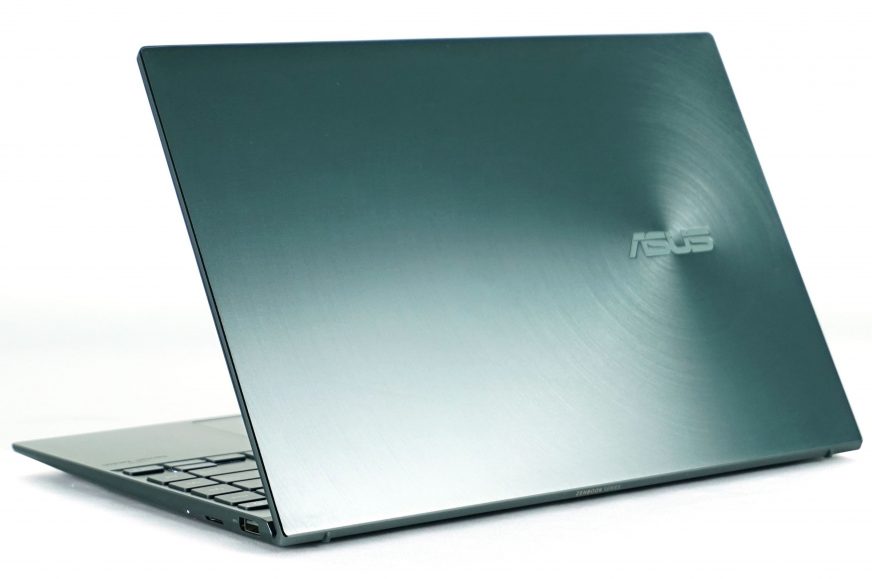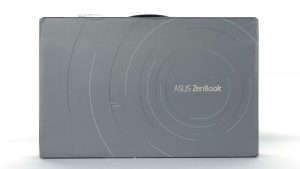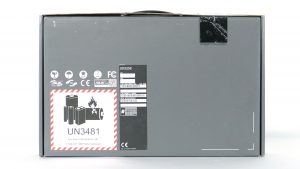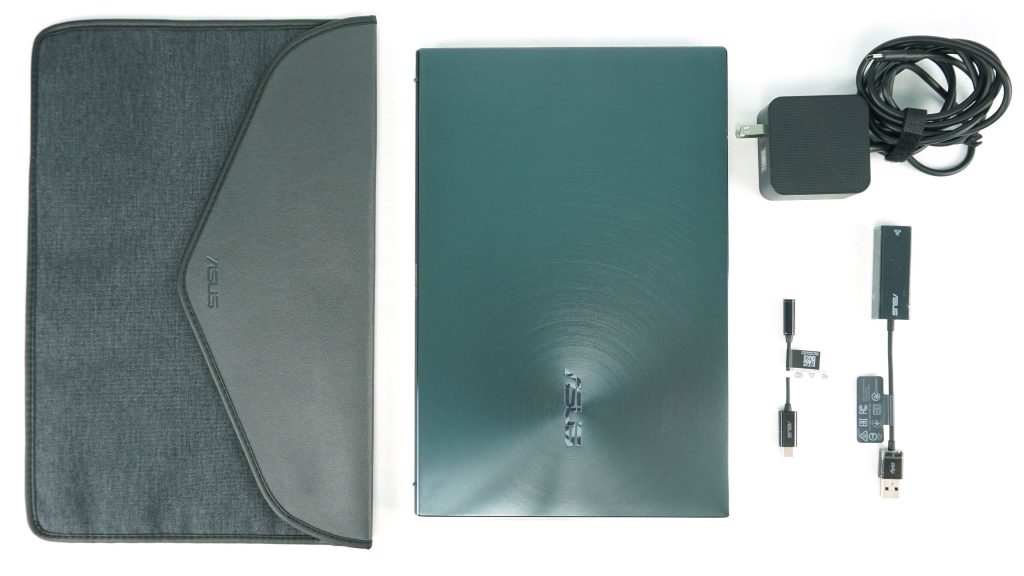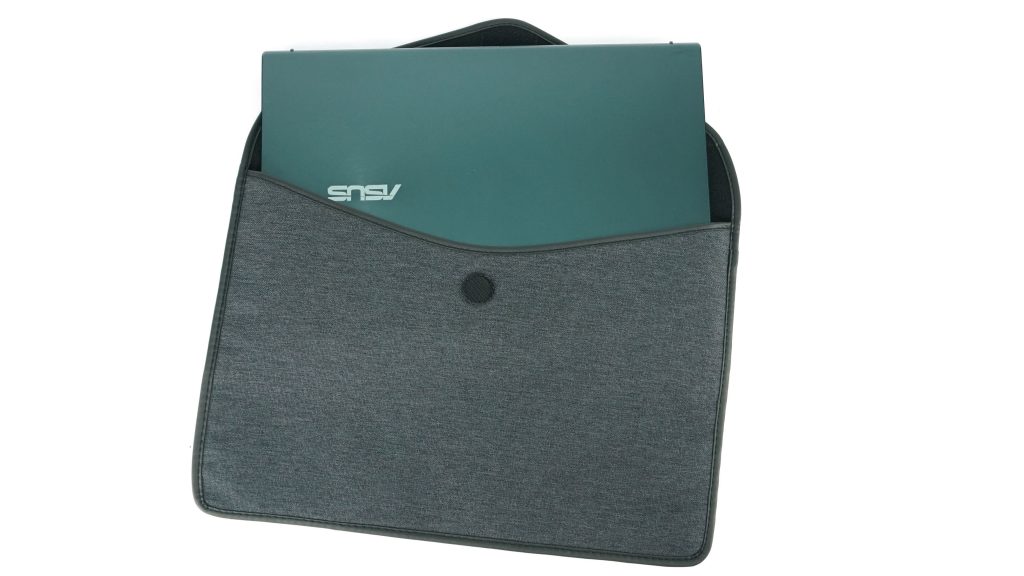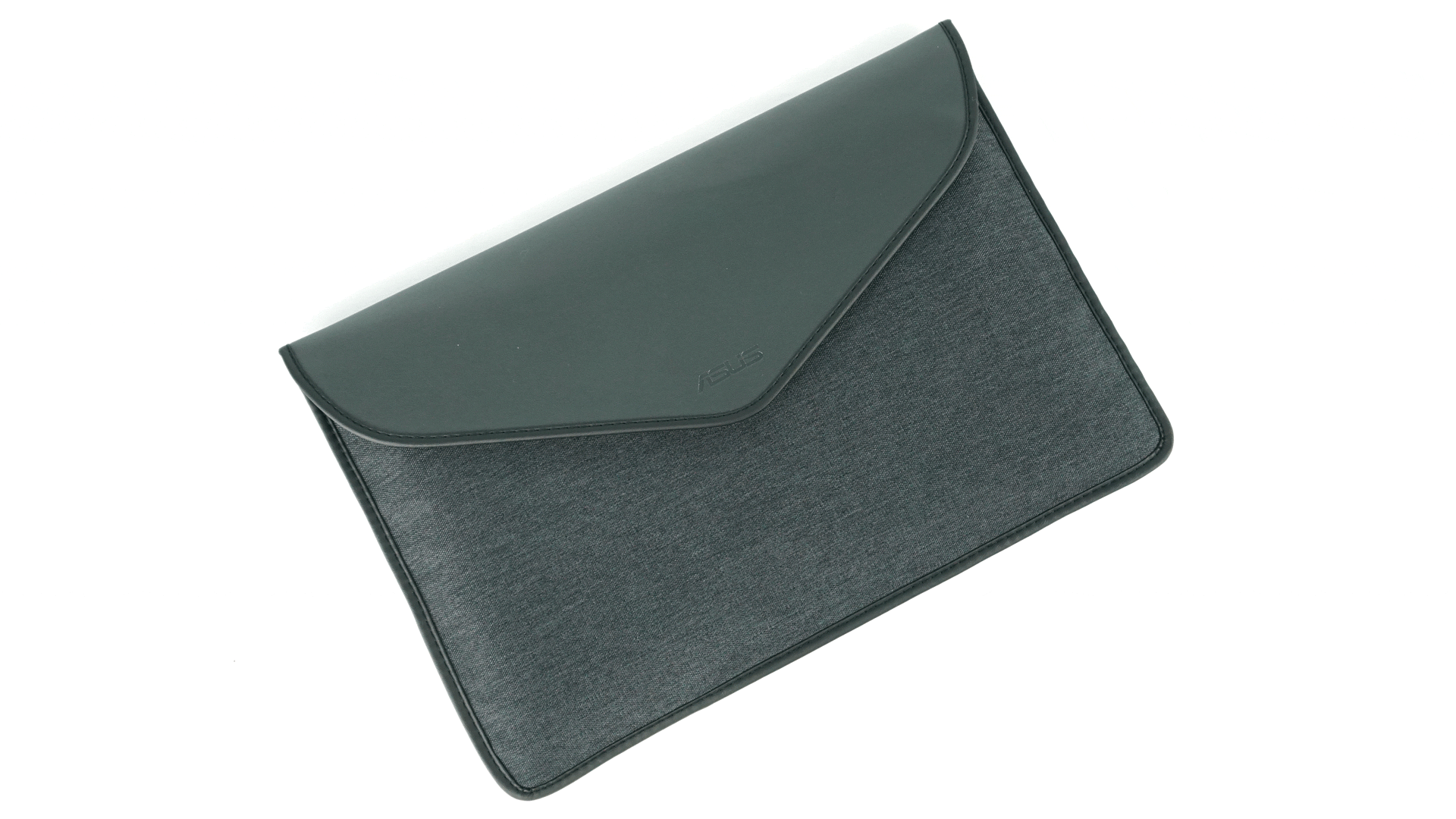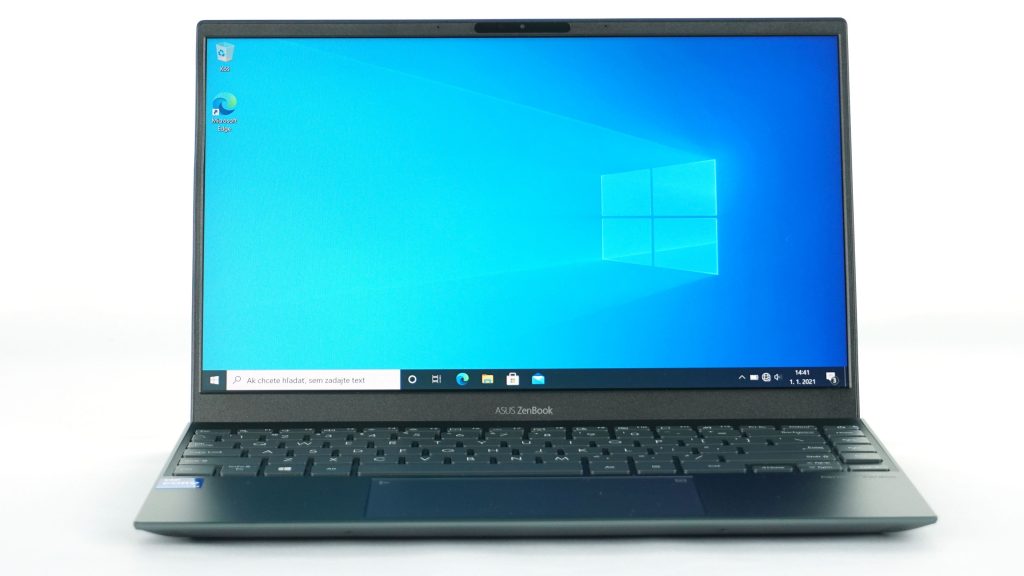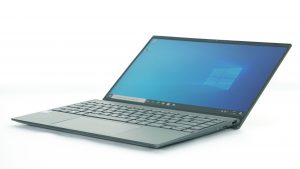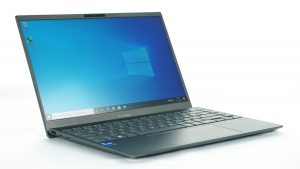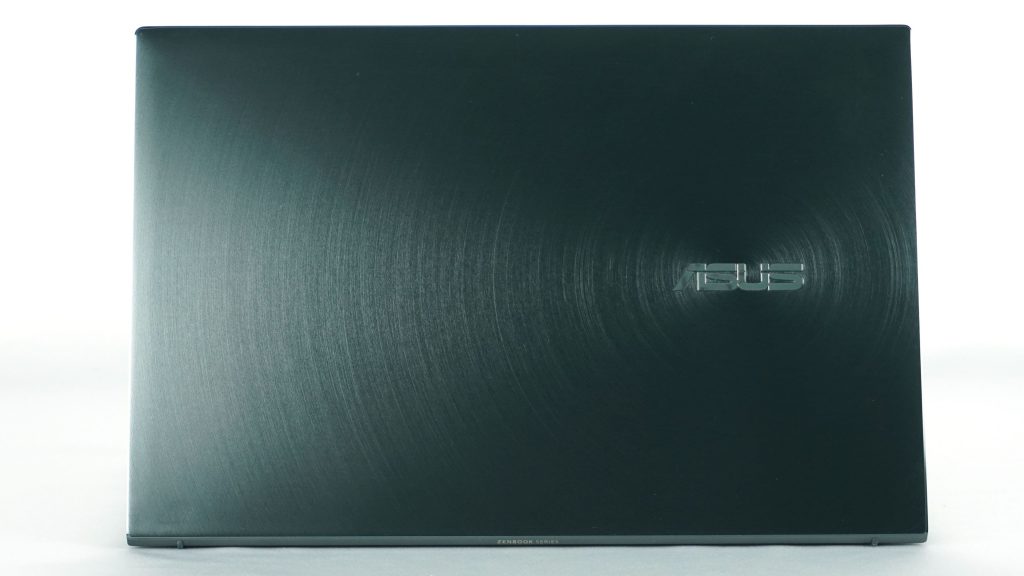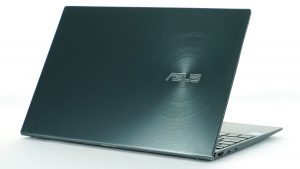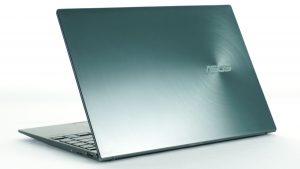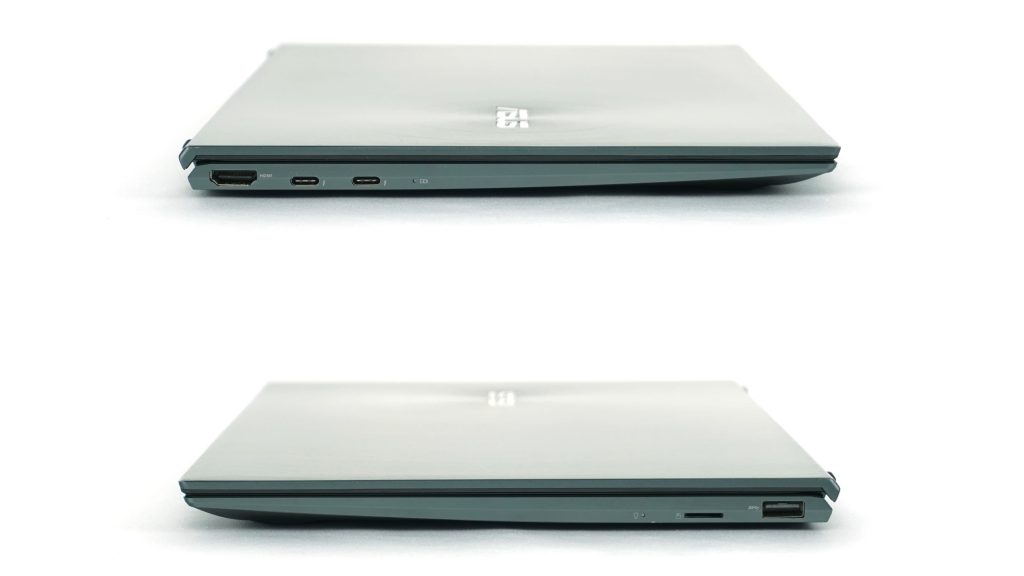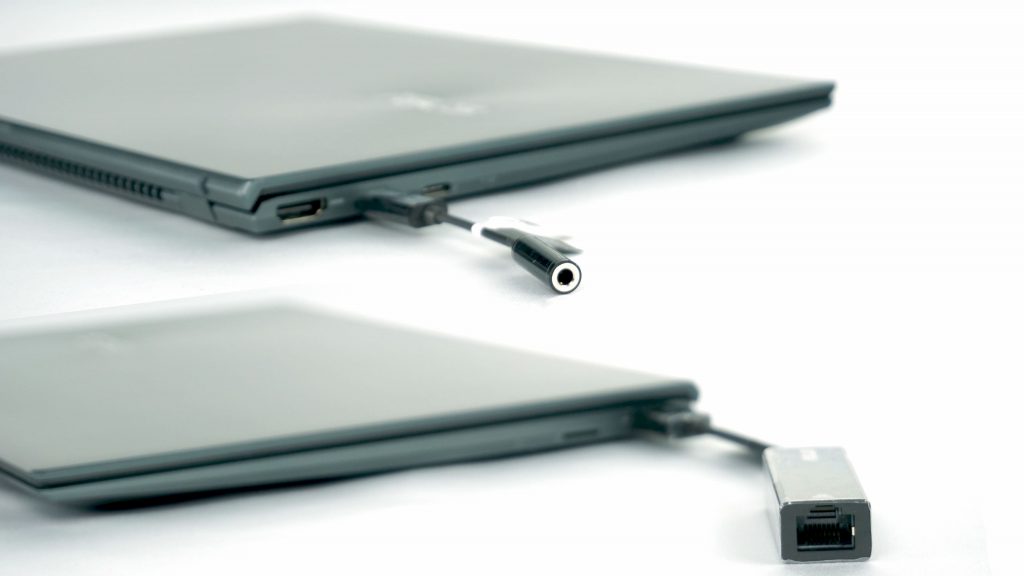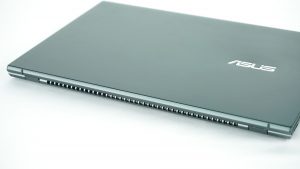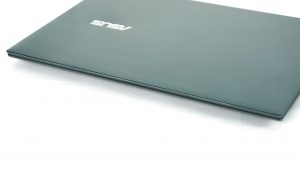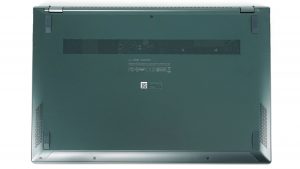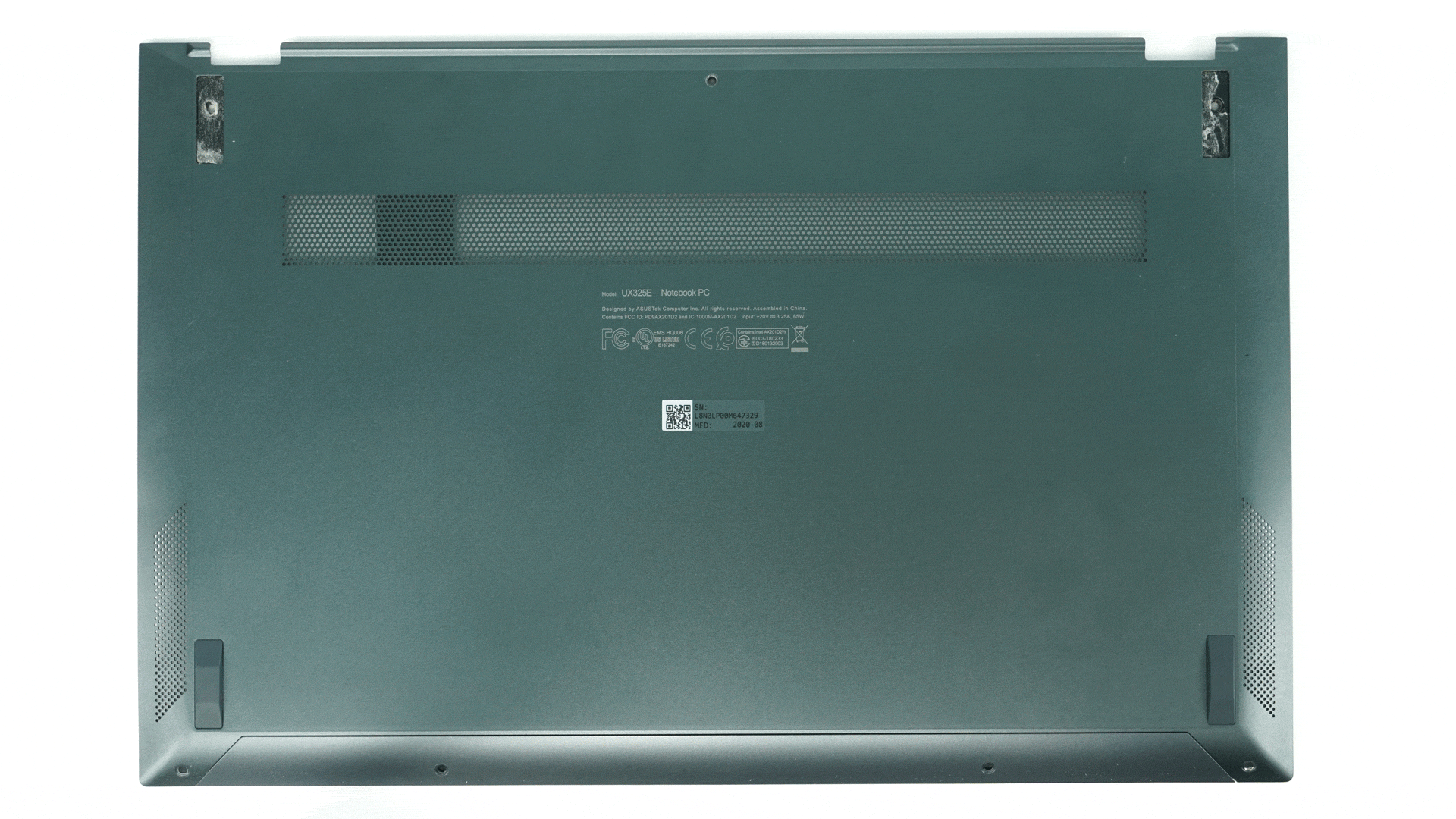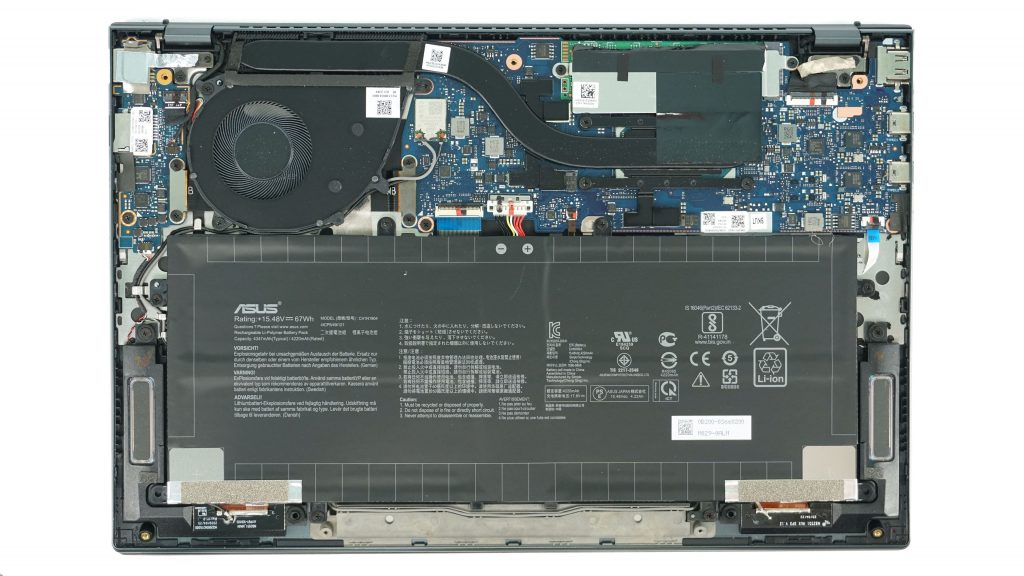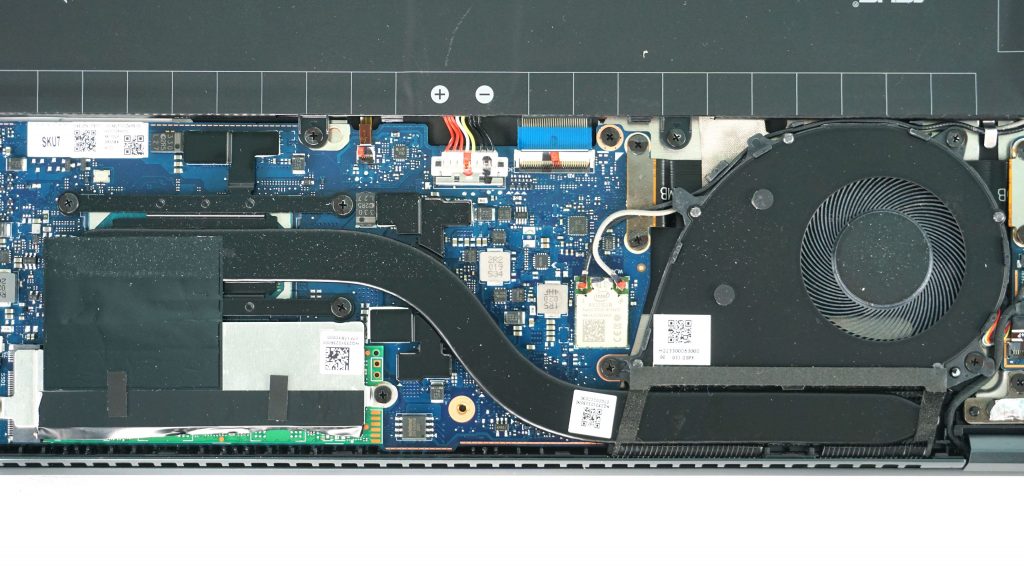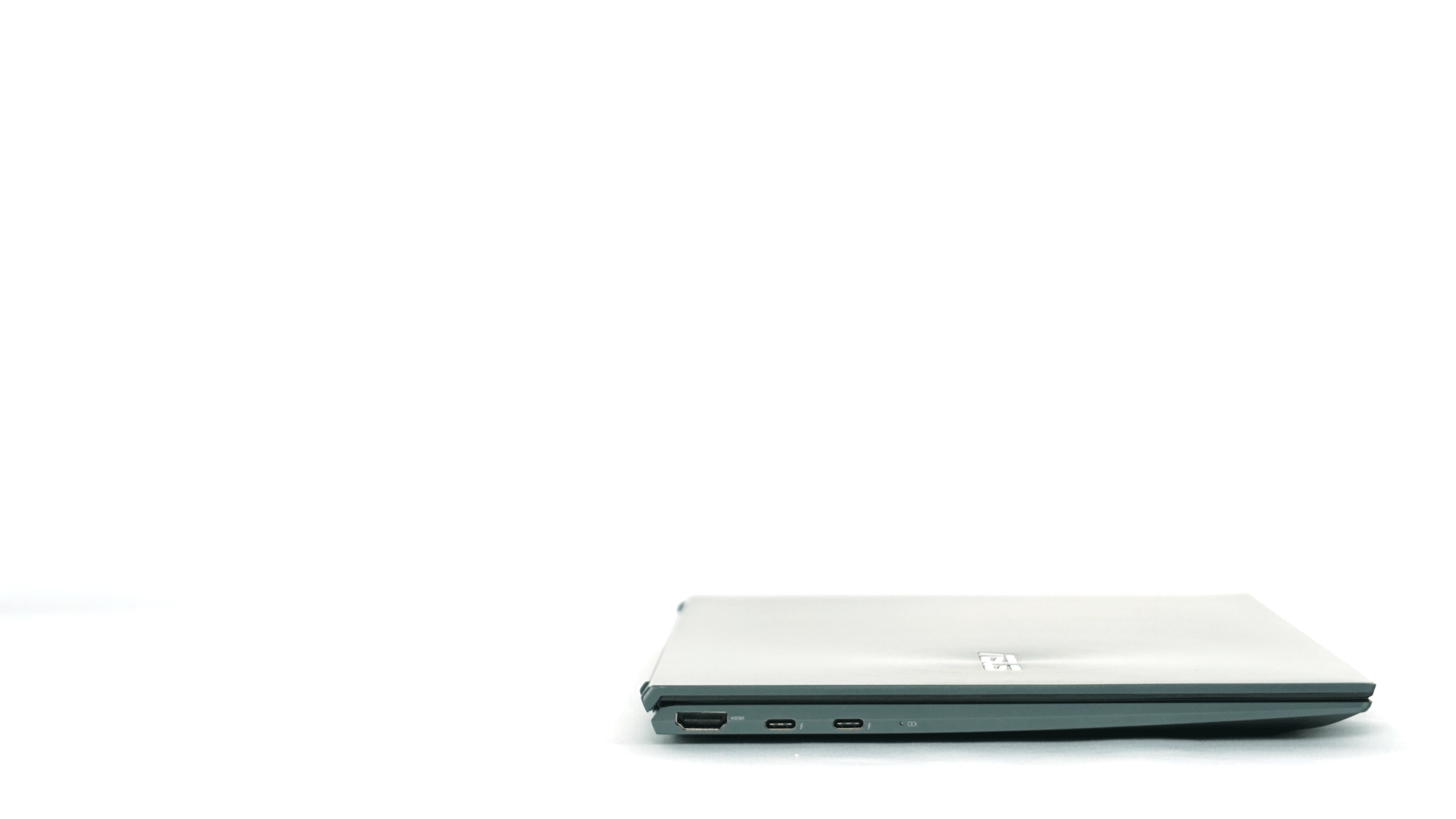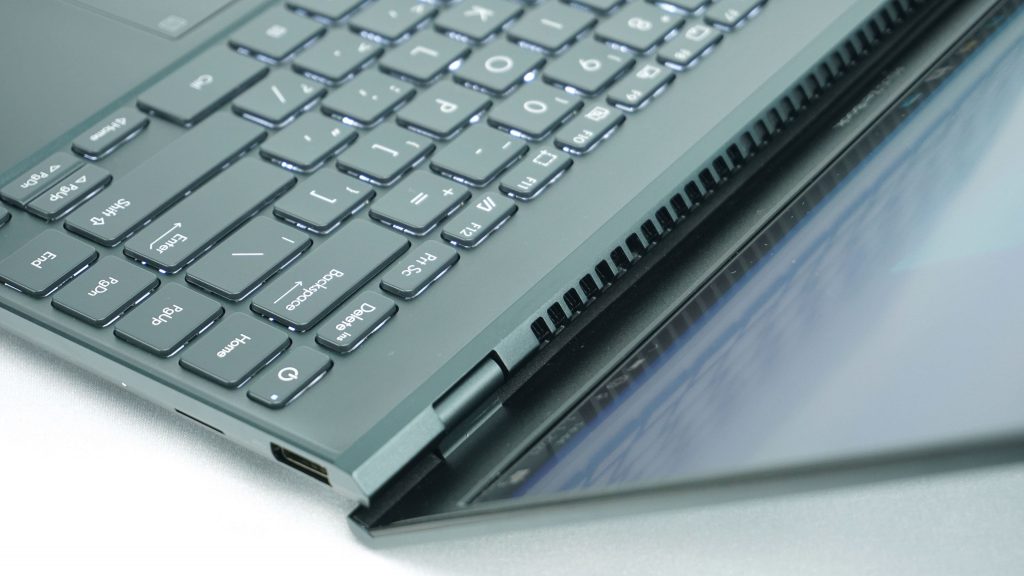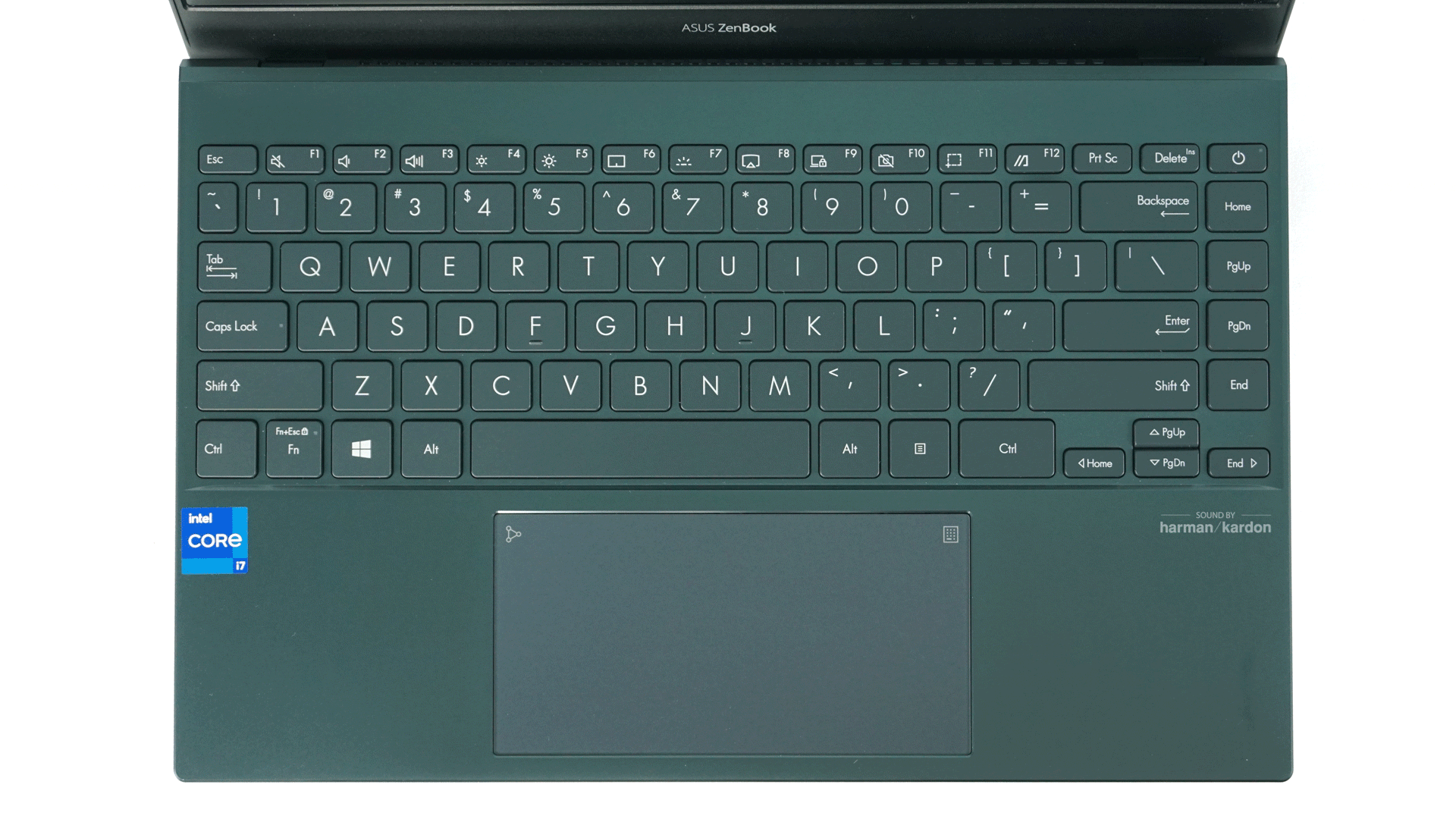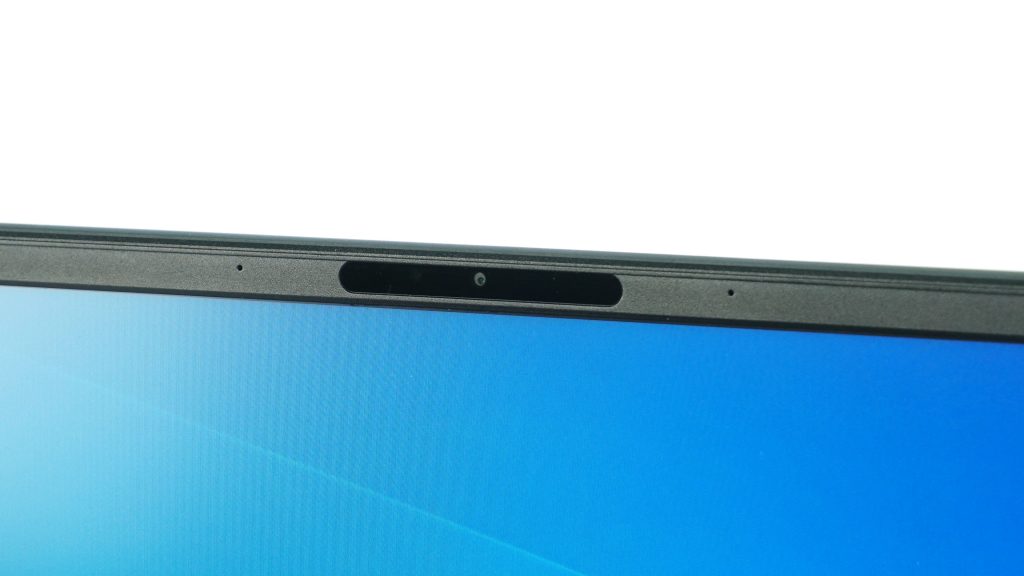Specifications and details
Intel brought the 11th generation of processors relatively quickly, which naturally means that most laptop manufacturers have updated their models. These include Asus, which in addition to the new Flip S also introduced a revamped ZenBook 13 and 14. We reviewed the last generation’s 14, now we will test the smaller 13-inch model. Expectations are high, as I considered the ZenBook 14 to be one of the best ultrabooks of the year.
Basic specs
| Parameters | Asus ZenBook 13 UX325E | |
| Dimensions | 304 × 203 × 13,9 mm | |
| Weight | 1198 g | |
| Display | 13,3", 16:9 Full HD 1920 × 1080 px, IPS, 60 Hz, matte, 450 nit 1W / 300 nit 2,5 mm borders, 88 % BTS | |
| Procesor | Intel Core i7-1165G7, 4C/8T, 15W, 10nm | |
| Graphics card | Intel Iris Xe | |
| Memory | 16 GB LPDDR4X (4266 MHz) | |
| Storage | 1 TB SSD PCIe 3.0 x4 NVMe (Intel SSD 660p SSDPEKNW010T8) | |
| Ports | 2× 40 Gb USB-C Thunderbolt 3 (charging and DisplayPort), 1×5 Gb USB 3.2 Gen 1 typ A, 1× HDMI 2.0, 1× microSD reader | |
| Battery size | 67 Wh | |
| Camera resolution | 720p 3D IR Windows Hello | |
| Speakers | stereo-speakers Harman Kardon | |
| Approximate price | 34 990 Kč/1335 € |
Details
A gray cardboard carries the typical ZenBook visuals with concentric circles.
We received a pre-production sample, so we do not have an EU charger. The rest of the packaging is quite ample. Here you will find an adapter from USB-C to audio jack, as we saw with the last generation’s ZenBook 14 and also with the Flip S. In addition, there is also an Ethernet adapter, and more interestingly, a protective case.
It is a simple fabric case, which you will definitely appreciate when travelling, and it is definitely a useful accessory, for which I give a thumbs up.
The new generation of ZenBooks is actually an evolution of last year’s models, from which we tested the larger version of ZenBook 14. The review sample offers the same design, just in a smaller body and with even lower weight. While the ZenBook 14 weighed almost 1.2 kg (2.6 lb), the new 13 slightly exceeds the 1.1 kg (2.4 lb) mark. The difference is therefore relatively small and in practice hardly noticeable.
The main difference compared to the previous models is upgrading to the 11th generation Intel Tiger Lake, which we have already seen in Flip S UX371. The last generation ZenBook 14 had Ice Lake Core i7-1065G7, the novelty was given a direct successor of the Core i7-1165G7, as well as the Flip S. There is a new Intel Xe graphics, 16 GB 4267 MHz RAM and 1 TB SSD. Unlike the previous generation, AMD versions have disappeared from the ZenBook line, which is definitely a pity. Lower configurations offer 512 GB SSD, 8 GB RAM and Core i5-1135G7. Prices range from EUR 1,039 – 1,309/CZK 27,990 – 34990.
Unlike the premium Flip S, the “base” ZenBook 13 did not receive Intel Evo certification. Nevertheless, it is still a modern and fast ultrabook that offers everything essential – fast wake-up, fast charging, WiFi 6 and biometric security. It is therefore questionable in which area it did not actually meet the necessary certification requirements, or maybe it is purely a marketing and business move, when only the Flip S received Evo tag and lower models didn’t. There may also be a financial reason, as I assume that certification and verification of the required specifications is probably not for free. However, this is only my speculation and we will try to contact the manufacturer with this question.
The design of the novelty is practically identical to the predecessor. Metal body with brushed edges and the typical display lid with circles is probably no longer a surprise, but it should definitely be mentioned. Again, the dark body easily captures fingerprints, which means you’ll have to clean it fairly often.
I praised the last year’s ZenBook 14 for its above-average connectivity, and the new 13 follows in its footsteps. After all, it is only a smaller version of the same model. For recapitulation, on the right side we have a classic USB type A with 5 Gb speed, a microSD card reader that is absent on the Flip S. The left side is occupied by HDMI 2.0 with 4K support at 60 Hz and two USB-C ports. Thanks to the new 11th generation processors, these are already new Thunderbolt 4 ports, both of which support charging and video output.
The package also includes the two mentioned adapters – USB-C to 3.5 mm audio jack, as well as RJ-45 Ethernet for wired connection to the Internet and local area network. Their presence in the package is definitely welcome.
As with the ZenBook 14, the front edge of the notebook is without a cutout, yet the display lid is easy to touch and open. You can also open the notebook with one hand, which is not a matter of course with such light devices especially. The rear side hides all ventilation and cooling system openings.
The top view again shows us the lid with the Asus logo and a circular design. The lower part has four rubber feet and a ventilation grille in the upper part.
After removing the bottom cover you get to the components. You need a T5 screwdriver to remove it. Attention should be paid to a pair of screws hidden under the rubber feet.
The layout is not surprising, interesting is the deep blue motherboard, similar to the ZenBook 14. The whole lower part is occupied by a large battery and next to it we can see the speakers.
Cooling is provided by a large heatpipe run from the processor to the heatsink, through which the fan blows air. We will look at the efficiency of this cooling later in the tests.
The review configuration has the 11th generation Intel processor, namely the Tiger Lake Core i7-1165G7. That is complemented by 16 GB LPDDR4X 4266 MHz RAM and 1 TB SSD. In this series, you can also reach for a lower model with the i5-1135G7, 8 GB RAM and 512 GB SSD. You won’t find dedicated graphics or AMD processors in the new ZenBook 13. The 11th generation of Intel brings a change in the form of integrated Iris Xe graphics, with which Intel promises significantly higher performance compared to the 10th generation and at the same time dares to compete with Vega graphics in AMD Renoir. This comparison is going to be really interesting and we will look at it in a moment. It will also be interesting to see the difference between the ZenBook 13 and the Flip S, which offers the same processor. In the last generation, we saw relatively large differences between laptops with the same processors.
Only the SSD is replaceable, RAM and WiFi are part of the motherboard. Therefore, consider the choice of configuration according to your needs. Personally, I would welcome it if we took it a step higher and 16 GB of RAM would become the basis, with the possibility of expanding to 32 GB. For example, in the XPS 13, Dell also offers a 32 GB configuration, which I personally would certainly reach for rather than 16 GB. You can find the 32 GB configuration on the manufacturer’s website, but I did not find it in our offer. I will therefore check its availability and add this information later.
ErgoLift hinge is an iconic function, which tilts the keyboard a bit when you open the display to make it easier for you to type on it. The notebook then forms a 3-degree angle with the pad and the keyboard with the display opens up to a maximum of 150 degrees. Thanks to the lifting of the base, the notebook also benefits from better cooling and sound reproduction quality.
The keyboard offers basically the identical layout to the ZenBook 14. The manufacturer refers to it as Edge-to-edge, which fully captures how the keyboard fills the entire width of the base. However, as the 13″ model is 1.5 cm smaller in width, the left row of control keys is slightly narrower than in the larger sibling. In addition, the layout is practically identical with the Home, End, PgUp and PgDn buttons on the right side, separated by half-sized arrows, single-line (bar-shaped) Enter and the power button in the upper right corner next to Delete. As you may know, I would welcome a two-line (ISO) Enter and the power button elsewhere, as you may mistake it for Delete in its current position, which is often used. Plus, I did not feel any significant difference between the resistance of the two buttons, which would help at least a little in use.
Again, I praise the relatively large touchpad with a pleasant glass surface and integrated touchpad. We also saw the same on the ZenBook 14. There is also the NumberPad 2.0, i.e. a backlit numeric keypad integrated into the touchpad, which you activate by pressing the icon in the upper right corner.
Although you won’t find a fingerprint reader here, you won’t lose biometric security. Similarly to the ZenBook 14, there is a 3D IR camera with Windows Hello support. After capturing and saving your face, just open the notebook it unlocks immediately. Personally, I think it’s even faster and more convenient than a fingerprint reader. The webcam has a resolution of 720p, no surprises here.
Both the last-generation ZenBook 14 and the new Flip S have achieved excellent battery tests. This is mainly due to a 67 Wh battery, which is above average in such ultrabooks. The usual battery capacity is around 50–55 Wh. The same battery can be found in the smaller 13, and with the new processors, it has a potential to reach an equally good result. A smaller display can be an advantage in this case, and we are potentially looking at a new leader in battery life. But we will verify this in a moment.
Apart from the fact that we do not have the EU version of the charger in our test package, it is basically the same 65 W model with a USB-C connector as we saw with the ZenBook 14. Fast charging is included as well, which means 47% after half an hour, 76% after an hour and 95% after an hour and a half. A full charge takes the usual time, a little over 2 hours.
The previous king of this test was the Asus VivoBook S15 with a time of 9 hours and 26 minutes. But the king is dead, long live the king! The ZenBook 13 UX325E has set a new record in our demanding YouTube test with a time of 9 hours 37 minutes, beating the older sibling, the ZenBook 14 UX425, with a time of 9 hours and 5 minutes. Compared to the VivoBook, don’t forget the fact that 50% brightness on laptops is different, so if it matched the same level, the new ZenBook 13 would even have an advantage.
Let’s look at the test results.
- Contents
- Specifications and details
- Testing methodology
- Display tests
- Rendering and Geekbench
- 3D/PC Mark and Unigine Heaven/Superposition
- Gaming tests – integrated graphics
- Encryption, encoding
- Memory and storage tests
- Heating and battery life
- Analysis of clock, power draw and temperatures
- Utility app
- Rating





